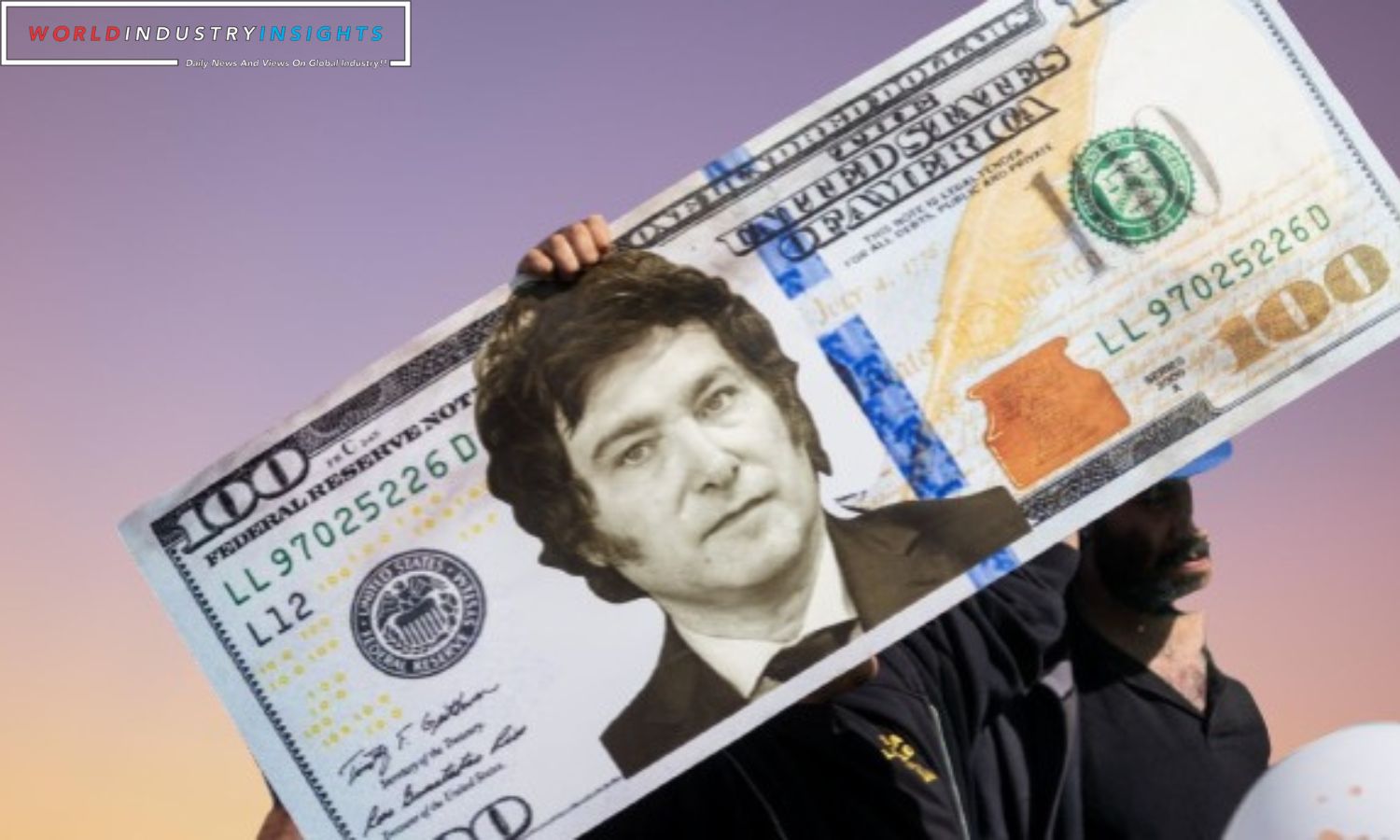Argentina Monetary Crossroads: As Argentina contemplates the radical shift of dollarization, it stands at a pivotal moment that echoes the experiences of Zimbabwe and Ecuador, offering both promise and caution. President-elect Javier Milei‘s campaign pledge to adopt the U.S. dollar or establish a peg to it is seen as a potential remedy for the nation grappling with hyperinflation, reaching alarming rates nearing 150%, pushing a significant portion of its population into poverty.
Zimbabwe’s foray into dollarization serves as a multifaceted narrative, revealing both the benefits and pitfalls of such a monetary strategy. The African nation abandoned its currency in 2009, opting for a multi-currency system centered on the U.S. dollar. The move initially erased savings overnight, leaving citizens bewildered and financially devastated. Bongiwe Mudau, a banker, vividly recalls, “We just woke up, and there was nothing in the account anymore.” However, over time, dollarization brought stability to prices, offering a semblance of order to the economy.
Zimbabwe, planning to remain dollarized until 2030, showcases the potential for stability, but challenges persist. The scarcity of small bills, a common issue in dollar-dependent economies, hinders transactions, leading to some loss of revenue for street vendors like Moses Mhlanga. Despite the difficulties, the consensus among Zimbabweans is that dollarization brought a level of economic predictability sorely lacking during the era of hyperinflation.
Argentina, having experienced its own economic crises and experiments with dollar pegs, faces a delicate decision. Milei’s vision of dollarization as a tool to curb inflation and restore economic order echoes the sentiments of those who fondly remember the stability of the 1990s, marked by low inflation and a strong peso. However, the economic imbalances that ensued ultimately shattered the dream, leading to the infamous “corralito” and a severe economic crisis.
Also Read: Argentina Economic Crossroads: Debt Crisis and Currency Dilemma
Ecuador, on the other hand, presents a more optimistic narrative. Dollarization in 2000 swiftly tamed hyperinflation, with monthly annualized inflation dropping from an average of 33% in the five years preceding the move to a mere 1.54% over the next decade. The stability provided by adopting the U.S. dollar allowed citizens greater security in their purchases, as vividly noted by retiree Wilson Andrade in Quito.
The lessons from Zimbabwe and Ecuador showcase the potential benefits of dollarization in taming hyperinflation and restoring economic stability. However, the drawbacks, such as limited control over monetary policy and the inability to devalue for trade adjustments, are significant considerations. Argentina, with its larger economy and export reliance on soft commodities, faces a unique challenge in implementing a strategy that has worked for smaller nations.
As Argentina stands at the crossroads, the echoes of Zimbabwe’s cautionary tale and Ecuador’s success serve as guideposts for navigating the complex terrain of monetary decisions. The ghosts of the peso’s tumultuous past linger, and the nation must carefully weigh the potential benefits against the challenges to determine its path forward.
Our Reader’s Queries
What is happening with Argentina currency?
In a bid to tackle its worst economic crisis in decades, Argentina has implemented a series of large-scale spending cuts, including a significant devaluation of its currency, the peso, by over 50%. This move is aimed at stabilizing the country’s economy and restoring investor confidence. Despite the potential short-term challenges, the hope is that these measures will pave the way for long-term growth and prosperity.
What would happen if Argentina dollarized?
Argentina faces a challenge in dollarizing its economy due to its monetary base being valued at $20 billion at the official exchange rate and only $8 billion at the black-market exchange rate. To achieve dollarization, the country would need to borrow dollars to replace its monetary base, resulting in a dollar-denominated debt that would need to be repaid. This presents a significant hurdle for Argentina in its efforts to transition to a dollar-based economy.
Why does Argentina keep printing money?
The inflation issue in Argentina is beyond severe, with rates soaring to a staggering 140%. According to Raisbeck, the government has resorted to printing money to fund its deficit spending. This approach is far from sustainable and could lead to dire consequences in the long run.
Why did Argentina devalue its currency?
Milei’s bold economic strategy centers around devaluing the peso from 400 to 800 per $1 U.S. dollar, with a monthly 2% decrease thereafter. This move aims to boost Argentina’s export competitiveness and narrow the country’s trade deficit. By making exports more affordable, Milei hopes to attract more overseas buyers and stimulate economic growth.


